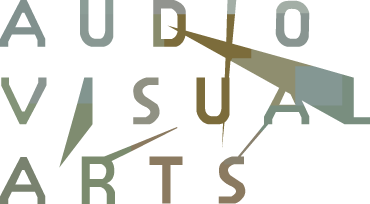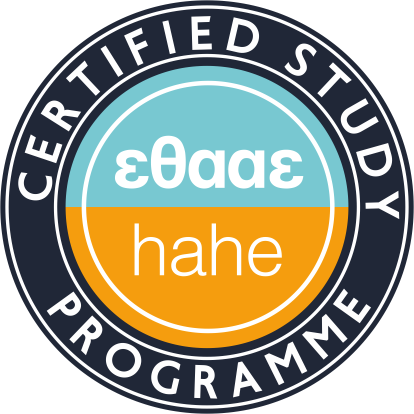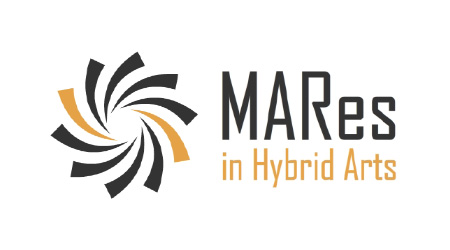Organization and Presentation of Artistic Portfolio
Teaching Staff: Aslanidi Maria
Course Code: THE606
Course Type: Elective
Course Level: Undergraduate
Course Language: Greek
Semester: 6th
ECTS: 5
Teaching Units: 3
Teaching Hours: 3
E Class Page: https://opencourses.ionio.gr/courses/DAVA166/
Teaching Structure:
| Activity | Semester Workload |
|---|---|
| Lectures | 26 |
| Lab Lectures | 13 |
| Literature Study and Analysis | 56 |
| Practice and Preparation | 30 |
| Course Total (ECTS: 5) | 125 |
This portfolio course emphasizes on the relationship of the artist to his/her work. The main objective of this course is to help students develop a scholarship-worthy portfolio. The course also explores conceptual thinking (narration/story telling) along with critical thinking (verbal/visual vocabulary), creative thinking (problem solving), communication skills (technical and/or not), and imagination as crucial features in developing the personal vision of the student. Students will have the opportunity to be further acquainted with traditional and digital mediums, presentation methods and techniques, and current trends and procedures as they develop and evolve within each period.
By the end of this course students will be expected:
- To express and communicate their ideas and art effectively and in at least one audiovisual arts medium.
- To demonstrate creativity, originality, risk-taking, experimentation and use of medium.
- To apply appropriate media, techniques, and processes.
- To apply efficiently skills such as critical thinking, analysis and evaluation.
- To demonstrate personal responsibility and problem solving skills.
- To select and apply a range of subject matter, symbols and ideas.
- To reflect on how artworks differ visually, spatially, and functionally.
- To demonstrate an understanding of presentation.
- To demonstrate an understanding of interview.
- To collaborate and contribute effectively to the community.
- To understand the range of careers in the field of audiovisual arts.
- To identify career opportunities and professional options associated to one’s own strengths.
- To recognize that a portfolio is a tool for professional artist and personal documentation, as well as, a requirement for a college admission.
- To prepare a portfolio for use in application to institutions of higher education or for the workplace.
- To demonstrate an understanding of how to apply technical skills with a variety of media required to prepare an art portfolio.
- To demonstrate skills on reflecting on, describing and evaluating one’s own portfolio.
- To demonstrate an understanding of how to create an efficient biographical note (CV or Resume).
- To speak effectively about their work and the work of others using formal critical concepts and techniques.
- To demonstrate knowledge to write a cover letter, a critique and an artist statement.
1st week: Introduction to the fundamental terms and concepts
2nd week: Introduction to the types of art portfolio
- What is Art and Project Portfolio
- Contents of the Art-and-Project Portfolio
- Portfolio as a means of demonstrating artistic and professional evolvement
- Portfolio as a marketing product and medium to promote one’s work in the market
3rd week: Developing and preparing a portfolio
- Stages of art development and preparation
- Art portfolio management tools
- Critical evaluation
- Portfolio assessment
- Collaboration-related issues
- Decision making-related issues
- Reviewing, updating content-related issues
- Code of ethics, copyright-related issues and technological protection measures
4th week: Art ePortfolios
- ePortfolios components
- Pros
- Best practices per field of expertise
- Popular online/web tools
- ePortfolio evaluation
- Technical issues
- Examples
- Discussion
5th week: Introduction to Film and Script Portfolios
- Specific-related features
- Specific-related practices and guidelines
- Popular online/web tools
- Examples
- Discussion
6th week: Introduction to Photography and Graphic Design Portfolios
- Specific related features
- Specific-related practices and guidelines
- Popular online/web tools
- Examples
7η εβδομάδα: Εισαγωγή στα Game Art and Concept Art Portfolios
- Specific related features
- Specific-related practices and guidelines
- Popular online/web tools
- Examples
- Discussion
8η εβδομάδα: Other types of Portfolios
- Music Portfolio
- Informatics
- Specific related features
- Specific-related practices and guidelines
- Popular online/web tools
- Examples
- Discussion
9η εβδομάδα: Bios, Curriculum Vitae and Resumes
- Features and content
- Arrangement, structure, style
- Popular online/web tools
- Examples
10η εβδομάδα: Types of letters
- Cover letters
- Recommendation letters
- Job application letters
- Features and content
- Arrangement, structure, style
- Popular online/web tools
- Examples
- Discussion
11η εβδομάδα: "Getting ready for the market": artistic and professional identity
- Logos
- Branding
- Slogans-taglines
- Guidelines
- Best practices
- Examples
- Discussion
12η εβδομάδα: ePortfolio, Traditional Portfolio and preparing the presentation
- ePortfolio vs physical portfolio
- From the first draft to the presentation day
- “Visualizing” the portfolio
- Popular online/web tools
- Examples
- Discussion
13η εβδομάδα: Student Art Portfolio Presentation
- Presenting the portfolio
- Discussion
- Barry, A.M. (1990). The Advertising Portfolio: Creating an Effective Presentation of your Work. NTC Business Books.
- Blom D., Hitchcock M. (2017) Perceived Usefulness and Relevance of ePortfolios in the Creative Arts: Investigating Student Views. In: Rowley J. (eds) ePortfolios in Australian Universities. Springer, Singapore
- Robert Knoeppel & Joyce P. Logan (2011) Linking theory with practice: a longitudinal analysis of student portfolios in principal preparation, International Journal of Leadership in Education, 14:3, 337-349, DOI: 10.1080/13603124.2010.503280
- Rowley, J. (2017). ePortfolios in Australian Universities. Singapore: Springer Singapore : Imprint: Springer.
- Rothman, J. (2016). Manage Your Project Portfolio: Increase Your Capacity and Finish More Projects. Pragmatic Bookshelf.
- Νικολακάκη, Ε. (2016). Η συμβολή του eportfolio ως μέσο αξιολόγησης του εκπαιδευομένου στην τριτοβάθμια εξ αποστάσεως εκπαίδευση. Ανοικτή Εκπαίδευση: το περιοδικό για την Ανοικτή και εξ Αποστάσεως Εκπαίδευση και την Εκπαιδευτική Τεχνολογία, 12, 5-22. https://doi.org/10.12681/jode.10235
Duration: 3 hours
- Lecture
- PowerPoint presentation
- Posting lectures
- Posting home-assignments
- Posting links and bibliography for further study
- Posting exams-related material
- In-class practice
- Home-assignments
- Discussion
- The learning process is supported by the asyncrhonous e-learning platform Ionio Open eClass (https://opencourses.ionio.gr.)
- Webtools, resources and sources, e.g.:
-
- Foliospaces: https://www.foliospaces.org/
- Behance: https://www.behance.net/search/projects/?search=portfolio
- Adobe portfolio: https://portfolio.adobe.com/
- Mahara: https://mahara.org/
- VisualizeMe:http://vizualize.me/
- Cvmaker: https://cvmkr.com/
- Careeronestop.org: https://www.careeronestop.org/JobSearch/Resumes/cover-letters-sample.aspx
- Successatschool.org: https://successatschool.org/advicedetails/280/cover-letter-template-no-experience
Students’ evaluation includes the following:
-
- Mandatory assignments
- Final exams
- Final grade = 60% exams + 40% assignments
Back



 Organization and Presentation of Artistic Portfolio
Organization and Presentation of Artistic Portfolio







